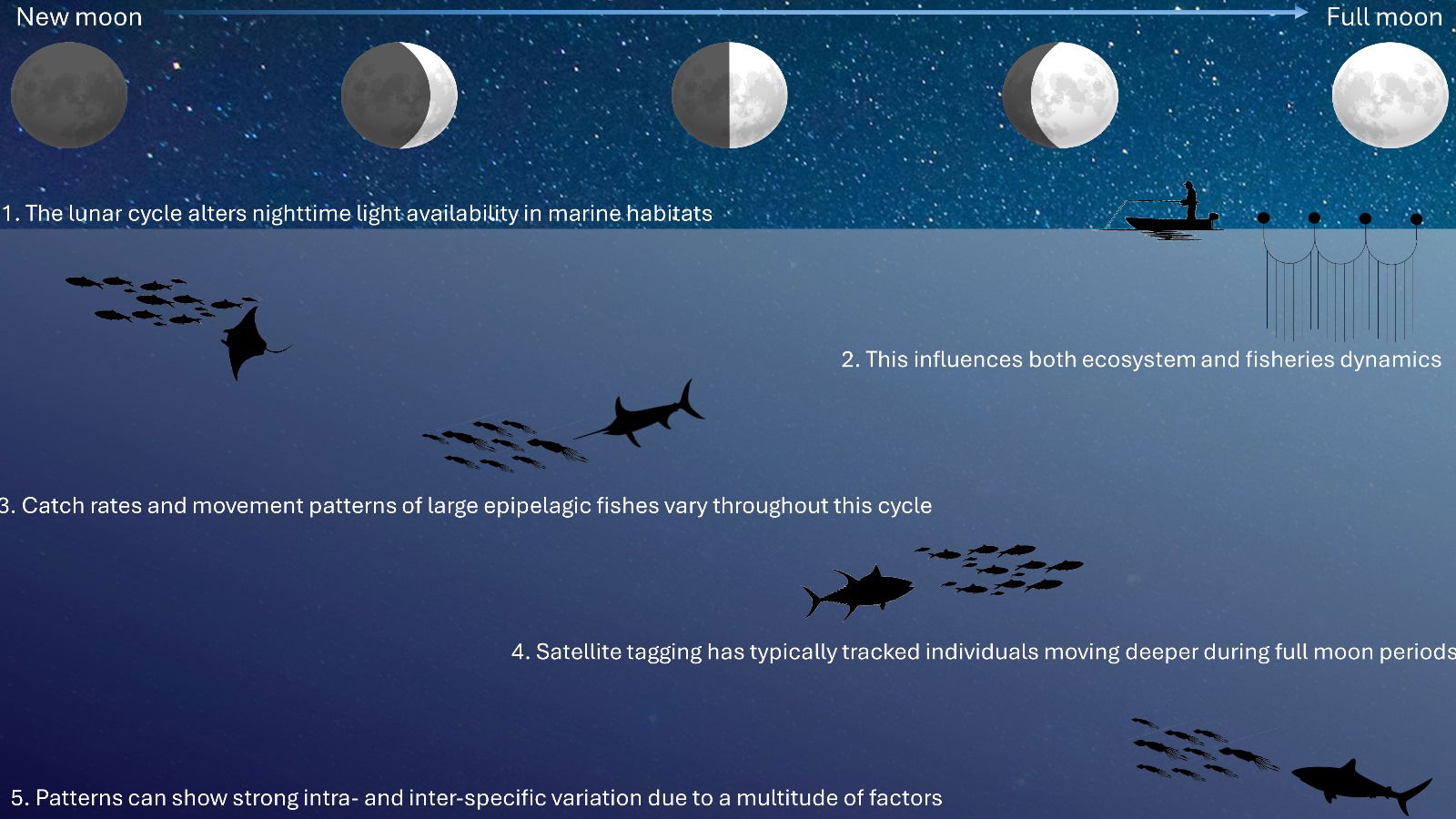The lunar cycle has a major influence on the daily structure of marine ecosystems. As the moon orbits the earth across an approximate 29.5 day cycle, it influences these systems by altering nighttime light availability and shaping the strength and timing of tides. Numerous studies have documented the effects of the lunar cycle on large epipelagic fishes (here referring to tuna, billfish, sharks and rays), however, there has been no concerted effort to systematically compare these patterns across studies. Here, we review 190 studies documenting the effects of the lunar cycle on the ecology of large epipelagic fishes and discuss the potential underlying factors that contribute to the observed patterns. Most studies focused on fisheries science and movement ecology, examining metrics such as catch rate and depth of tagged individuals, respectively. A smaller proportion of studies delved into foraging behaviors and behavioral patterns. The effects observed varied among study types and taxa, yet vertical movement patterns consistently indicated a trend of deeper movements with increasing lunar illumination. Many factors likely contribute to this variation, including study specific methods (both field and analytical), other light sources or obstructions in the marine environment (such as bioluminescence and cloud cover), local site variation (such as local oceanography and prey distribution), species specific traits (such as distribution and foraging strategy) and individual traits (such as ontogenetic stage and body condition). We propose best practices for future studies on lunar effects, aimed at addressing this variation and promoting comparative analyses.
